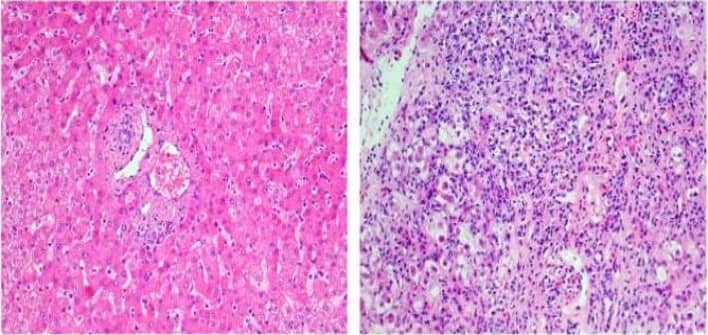The image on the left is from a core needle biopsy of a normal liver. The image on the right is from a patient with Autoimmune Hepatitis. Could you tell the difference?
Robert Harrod, a retired shift worker, is grateful for the role pathology has played in improving his quality of life.
In 2012 Robert was feeling unusually tired with no reason – “I could have fallen asleep at the drop of a hat.” After several weeks of this he visited his GP.
Initially his doctor attributed Robert’s low energy to long night shifts. Robert was working between 60 and 72 hours a week at the time. Nonetheless the GP agreed to refer Robert for some blood tests to be sure.
Robert got a call the same day asking him to come back to the doctor where he was told the results of his blood test indicated his liver wasn’t functioning properly. To find the cause, Robert needed an invasive liver biopsy, where a small sample of his liver was given to the pathology team.
The results revealed autoimmune hepatitis – a chronic disease whereby the body’s immune system attacks the liver. Untreated it can lead to cirrhosis and complete liver failure.
Robert’s condition has fortunately been kept under control by daily steroid tablets. He also has blood tests every three to six months to ensure the medication is working effectively.
Once the initial side effects of the steroids subsided Robert noticed an immediate improvement to his energy levels. He’s eternally thankful that he took that initial trip to the doctor;
“Without that pathology test I would have just put my symptoms down to getting older and working too much. Thankfully I got quick treatment and I’m feeling good. I don’t know how I’d be doing now if I hadn’t sought out answers.”

